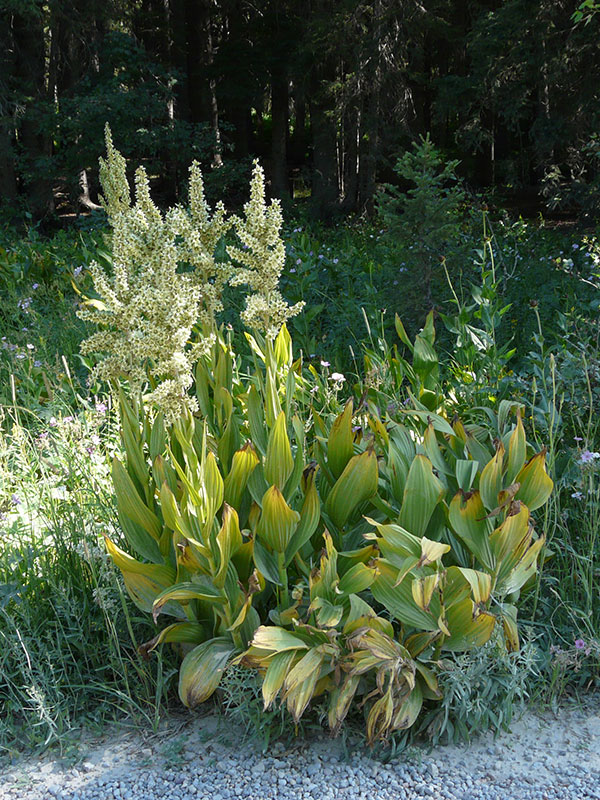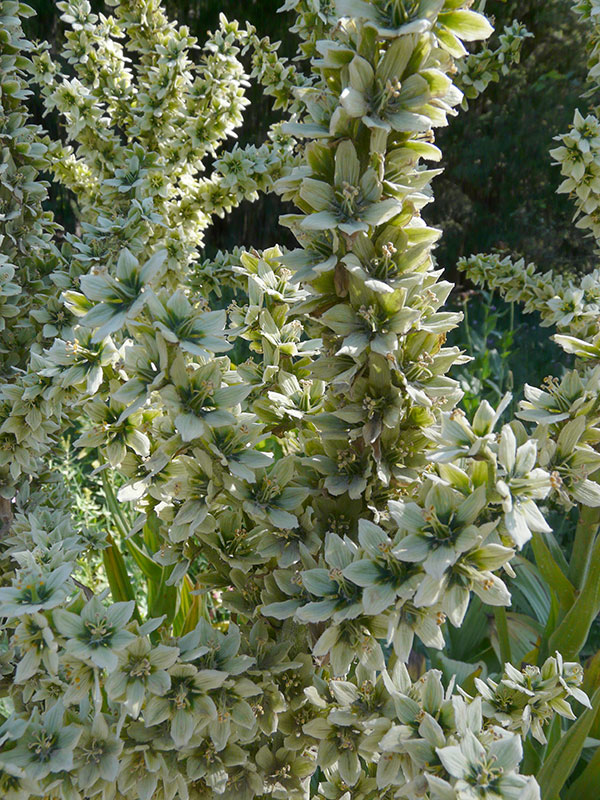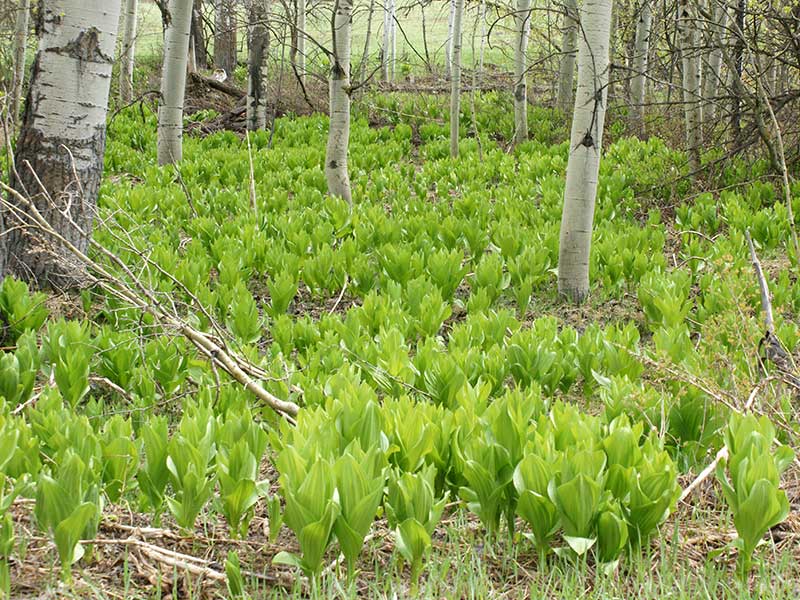Veratrum californicum / California false hellebore
- huge inflorescence covered with one-inch-plus flowers
- six white tepals with green centers
- moist areas, possibly very dense stands
- foot-long, heavily veined, pleated bright green leaves
Also known as: white false hellebore, veratrum, corn lily
The false hellebore is hard to overlook. It is probably as tall as you are, and it has a single stem. The inflorescence is highly branched, especially toward the top of the plant and the white and green flowers are too numerous to count. It is mostly found near streams or in wet meadows, such as near the western tiger salamander enclosure at the east end of Teton Canyon.
At first glance, veratrum looks a bit like the monument plant. But only at first glance. The veratrum inflorescence is highly branched and the flowers have six, not four, petals – or actually, tepals in this case. It is likely to be in a dense crowd of others of the species. It puts on quite a show…
… but not in every year. Like the monument plant, Veratrum californicum bloomed in 2019 but flowering may be sparse for several years, i.e. it shows mast seeding. Also like the monument plant, flowering is synchronize throughout the population. Some studies have indicated that it is the water availability in the previous year that determines whether flowering will be triggered, but low moisture “this” year may reduce the actual display. On the other hand, a cool summer two years prior has also been linked to masting.
Despite all the attention the species pays to its flowers, the dense populations are more often the result of vegetative reproduction by rhizomes. Interestingly, clonal reproduction seems to correlate with masting years, for reasons that are far from clear to me.
Take note also… like many of the other species in the area, the false hellebore is chemically well protected against herbivores, i.e. it is poisonous.
Finally, as you may know, since you have gotten this far, many plant people have a bit of a nerdy quality to them. So, for an “interesting” story of a veratrum parade, click here.
| Color | |
|---|---|
| Family | |
| Blossom size | |
| Inflorescence size | |
| When? | |
| Where? |







